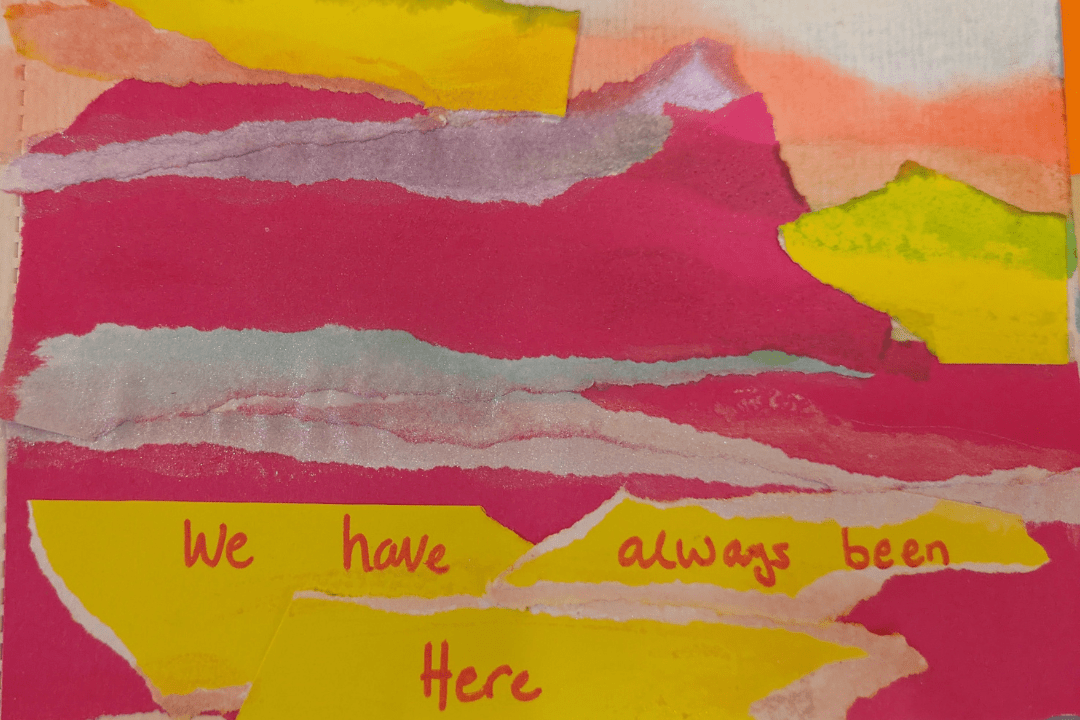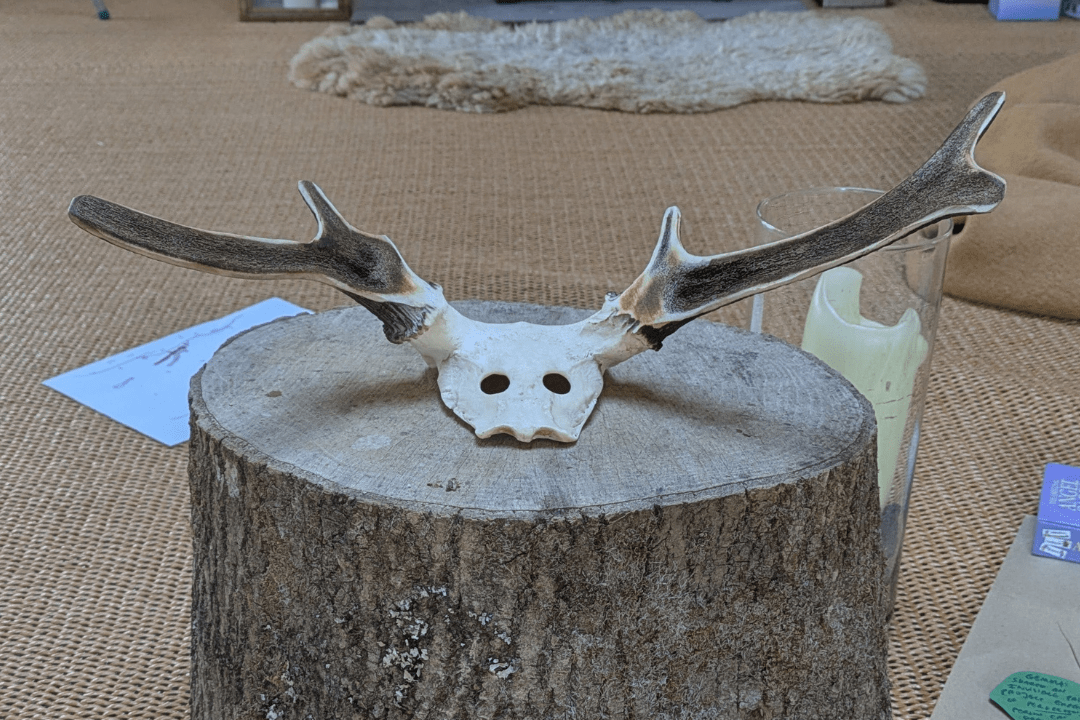After 18 months of development, Our Transcapes fully launched last week – and judging from the anonymous feedback, it’s achieved all that we at Queer Natures hoped it would.
Our project goals
I developed Our Transcapes to achieve three therapeutic goals for trans* folks: community building (reducing feelings of isolation in our identities); connecting with nature (remembering our animality and beingness that exist beyond our gender identities); increasing feelings of belonging and naturalness through an exploration of trans* prehistory.
On Saturday 27 September 2025, we put these goals to the test. Taking to Ecclesall Woods, a large managed site of Ancient South Yorkshire forest, 13 participants and my team gently wandered through the trees for two hours, chatted about all things queer prehistory, and took part in a creative workshop at the J G Graves Discovery Centre.
Community building and connecting to nature

“I was looking forward to an interesting event on a topic I didn’t know a lot about, but wasn’t sure exactly how it would pan out or what I would learn. I certainly wasn’t expecting it to be such a profound experience. I felt a bit anxious at the start of the event when people started arriving.”
– Our Transcapes participant
A number of participants were meeting for the first time at this event; during the walk, they connected over mushroom identification and getting to know each other along the stroll, pointing out beautiful things along with the way (including a member of the public’s dog in a backpack).
We stopped at a large pond, which hosted a microcosm of flora and fauna we might’ve seen in Mesolithic (Middle Stone Age) Britain and Ireland. We chatted about the Star Carr headdresses and their potential links to inter-world spiritual travel, non-human animal and human animal hybridity, and gender fluidity.
“As a trans person I loved finding out that ancient societies may have been less binary than we often think of them. I enjoyed spending time with other trans people. There was time to pay attention to the woods and notice the different tree types and fungi.”
– Our Transcapes participant
Moving further into the woodland, we came to glades and clearings – emulating the coming of farming to Britain and the forest clearances of the Neolithic (New Stone Age) – before stopping at a flowing stream to discuss possible Iron Age beliefs around sex fluidity and apotropaic (protective) spiritual power.
As we talked, folks asked questions and discussed things among themselves as they walked. Therapeutic goals 1 and 2 were achieved!
“I would describe the experience as immersive and integrated. If I was to draw comparisons, I had an emotional response, something which I rarely feel within the traditional, museum/gallery like context . . .
These objects had a place in which they lived and functioned, a landscape they where born from and contributed to, and seeing them within that world reanimated their bodies and imbued them with spirit.”
– Our Transcapes participant
Creative explorations and interconnections




Heading back to the Discovery Centre, we shared lunch. Therapeutic goal 2 got plenty of look in, as folks sat in a large circle to eat together and chat. People who wanted some quiet time could have that space, and those with various accessibility requirements could rest.
“S. K. went to great lengths to ensure the event was accessible and took into account people’s energy levels and access needs, making it possible for me to take part in the event and enhancing my connection to the topics.”
– Our Transcapes participant
Then, the creative workshop began. We first dived deep into ourselves through some guided breathing. Then, opening our eyes, we gazed at whichever artefact or story from our walk that had struck us the most. Folks were invited to start a dialogue with the artefacts, guided through suggested questions they could ask. Depending on what answers came up, folks could use them to take part in the second element of the workshop: making!
“Through this dialogue with the object I was able to feel my connection to the land, to people and to all the “ancestors” (beyond human) who have touched my life and who I am and find power in that.”
– Our Transcapes participant

Using paints, pens, scissors, glue, pencils and words, participants created a piece of art that encapsulated whatever spoke to them the most from the day. They were fantastic works that will be used to help demonstrate the third therapeutic goal was achieved: increasing feelings of belonging and naturalness through a queering exploration of prehistoric Britain.
The project’s impact
Written over a year ago, my first blog about the project after a call with the Queer Natures team, shows the thinking behind my methods while designing this event – and last week, I burst out crying when I read the feedback it received. Every therapeutic goal was represented.
As a developing creative facilitator, I also learned from the event where I felt the gaps were, how easy it is for time-keeping to slip, and what I can do to make the event more enjoyable for everyone – so it was a win for me, too.
Future collaborations

Next on the cards: a wider run of the project for all members of Peak Queer Adventures (not just transgender* folks) – and a younger person’s version for SayIt Sheffield. I’m also putting some feelers out for any spring or summer festivals that might want a queer touch! So, if you’d like to collaborate, you can reach me over at the Contact Page, or email me at [email protected].
In the meantime, an enormous thank you to the participants who took the plunge on this new project and to the wonderful Queer Natures team, who helped it come into being.
In a time of increasing transphobia and biological essentialism, it’s good to celebrate our (tr)ancestry – an ancestry that acknowledges the fluidity of peoples and communities and cultures that have walked and shaped this land, including those that didn’t fit the mould.
“I felt connected to my community and to communities and people and the land stretching back thousands of years. I felt keen to share what I’d learned with others, both the historic perspectives and also the feelings and emotions the workshop had stirred.”
– Our Transcapes participant










